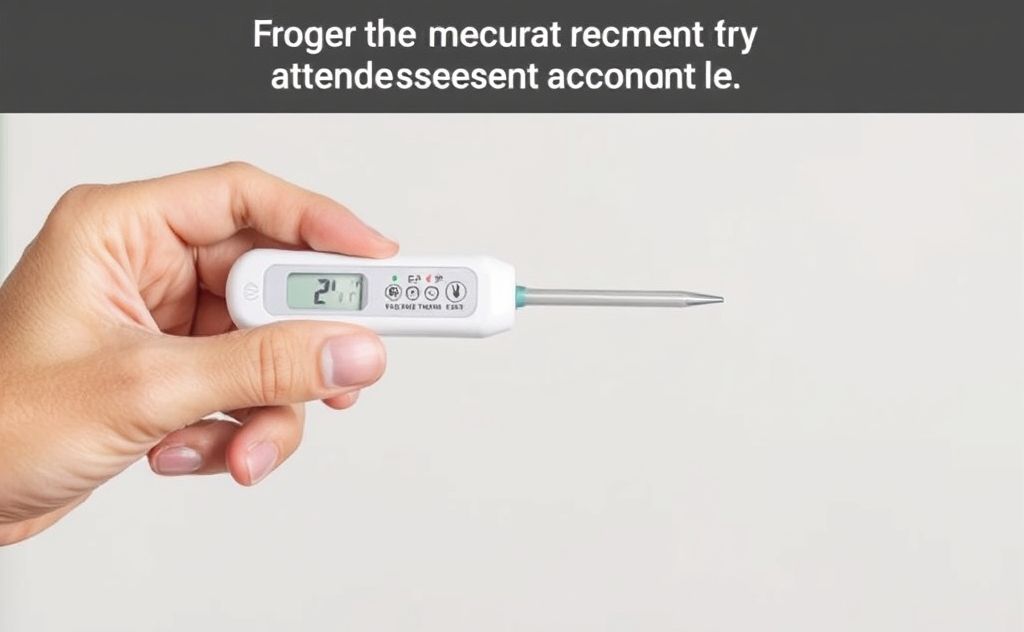To measure air temperature with a thermometer, place the thermometer in the shade away from direct sunlight and wait for it to stabilize before reading the temperature.
Measuring air temperature seems simple, but getting accurate readings requires proper technique and equipment. Whether you’re a weather enthusiast, gardener, or just curious about outdoor conditions, understanding thermometer placement and types will give you reliable results.

Types of Thermometers for Air Temperature
Liquid-in-Glass Thermometers
Traditional mercury or alcohol thermometers use liquid expansion to measure temperature. While mercury provides precise readings, most modern versions use safer alcohol due to environmental concerns.
Bimetallic Thermometers
These use two bonded metal strips that expand at different rates when heated. Common in analog outdoor thermometers, they’re durable but slightly less accurate than digital options.
Electronic Thermometers
Modern digital thermometers use thermistors or thermocouples to measure electrical resistance changes caused by temperature. These provide quick, precise readings and can connect to smart home systems for remote monitoring.

Proper Thermometer Placement
Height Above Ground
For accurate air temperature:
- Mount between 1.2-2 meters (4-6.5 feet) above ground
- This height avoids ground radiation effects while capturing true air temperature
Location Considerations
Avoid these common mistakes:
- Direct sunlight – causes false high readings
- Near buildings or pavement – artificial heat sources
- Enclosed areas – prevents proper air circulation
Ideal Setup
The most accurate measurements come from:
- White-painted Stevenson screen or similar shelter
- Slatted sides for air flow
- Double roof for rain protection
- Grass or natural surface below
Why Common Temperature Readings Are Wrong
Car Thermometers
Vehicle sensors near the grill are affected by:
- Engine heat
- Road surface radiation
- Exhaust from other vehicles
Bank and Building Thermometers
These often read high because they’re:
- Mounted on heat-absorbing surfaces
- Exposed to direct sunlight
- Placed too close to building heat sources
Sporting Event Temperatures
Field-level readings are inaccurate due to:
- Artificial turf heat retention
- Crowd body heat
- Lack of proper ventilation
Special Considerations
For Climate Monitoring
Researchers use maximum-minimum temperature systems (MMTS) with:
- Built-in fans for consistent airflow
- Precision sensors accurate to 0.1°C
- Regular calibration checks
Home Weather Stations
For accurate home measurements:
- Use a proper radiation shield
- Mount away from house and paved areas
- Consider a quality thermostat for indoor-outdoor comparison
Temperature Measurement Standards
| Factor | Ideal Condition | Common Mistake |
|---|---|---|
| Height | 1.5-2m above ground | Mounting at eye level (often too low) |
| Surface | Natural grass or soil | Over concrete or asphalt |
| Ventilation | Free airflow from all sides | Enclosed spaces or corners |
| Radiation | Full shade with white shelter | Direct sunlight exposure |
For more specialized temperature control needs, explore options like the best water heater thermostat controls for precise regulation in different environments.
According to NIST research, proper thermometer placement can reduce measurement errors by 2-5°C on sunny days. The National Weather Service emphasizes that consistent, accurate temperature records are essential for climate monitoring and weather forecasting.

